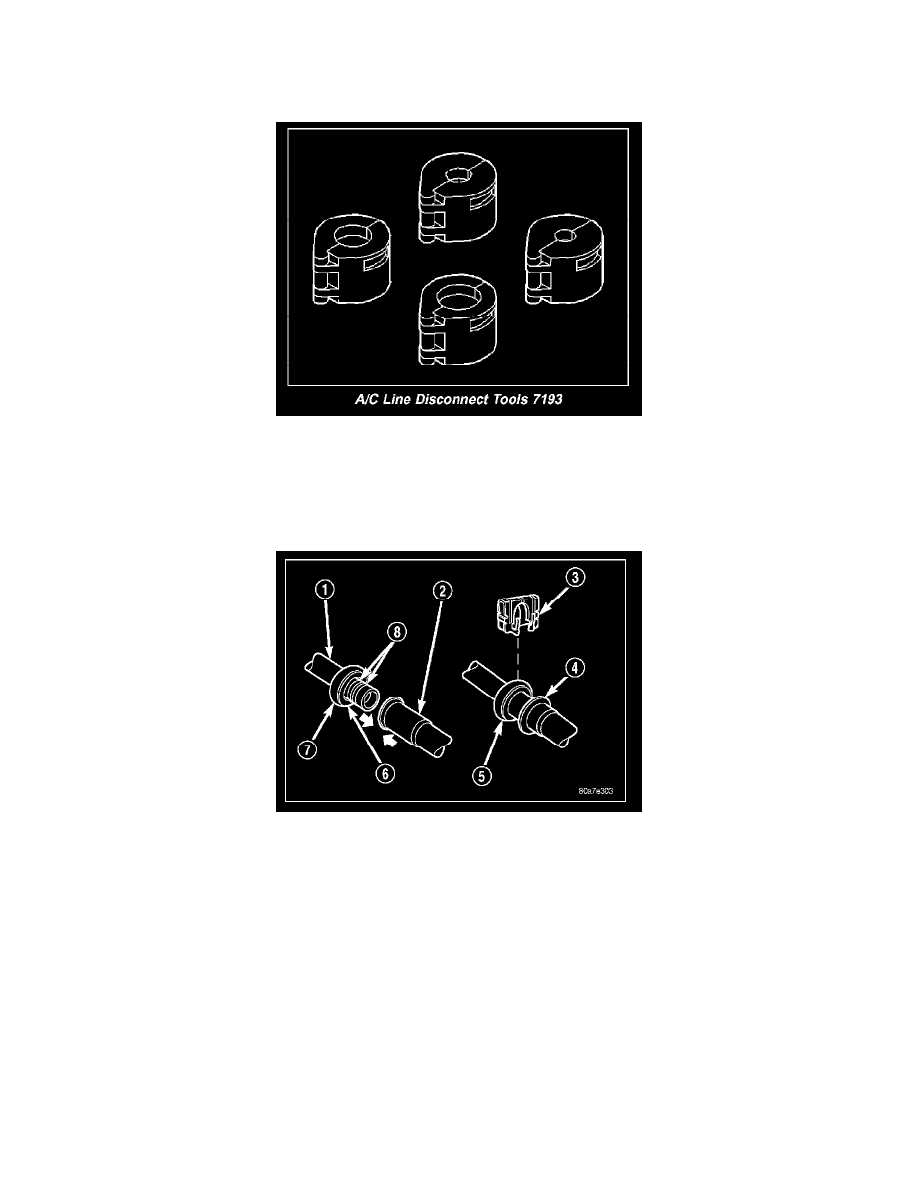Dakota 4WD V6-3.7L VIN K (2005)

Hose/Line HVAC: Description and Operation
Coupler-Refrigerant Line
A/C Line Disconnect Tools 7193
Spring-lock type refrigerant line couplers are used to connect the A/C accumulator and the A/C liquid line to the A/C evaporator. Secondary retaining
clips are installed over the connected couplers for added protection.
The spring-lock refrigerant line couplers require A/C Line Disconnect Tools 7193 for disengaging the two coupler halves.
The spring-lock type refrigerant line coupler is held together by a garter spring (6) inside a circular cage (7) on the male half of the fitting (1). When the
two coupler halves are connected, the flared end of the female fitting (2) slips behind the garter spring inside the cage on the male fitting. The garter
spring and cage prevent the flared end of the female fitting from pulling out of the cage. Some applications use a connection indicator ring (4) to help
indicate when the two coupler halves are fully connected.
Two O-rings (8) are used to seal the coupler connections. These O-rings are compatible with R-134a refrigerant and must be replaced with O-rings made
of the same material.
A secondary retaining clip (3) is installed over the connected coupler (5) for added protection.
Plumbing
The A/C refrigerant lines and hoses are used to carry the refrigerant between the various A/C system components. The refrigerant lines and hoses for the
R-134a system on this vehicle consist of a barrier-hose design with a nylon tube sandwiched between rubber layers. The nylon tube helps to contain the
R-134a refrigerant, which has a smaller molecular structure than R-12 refrigerant. The ends of the refrigerant lines are made from lightweight aluminum
or steel, and commonly use braze-less fittings.
Any kinks or sharp bends in the refrigerant lines and hoses will reduce the capacity of the entire A/C system and can reduce the flow of refrigerant in the
system. The radius of all bends in the flexible hose refrigerant lines should be at least ten times the diameter of the hose and the refrigerant lines should
